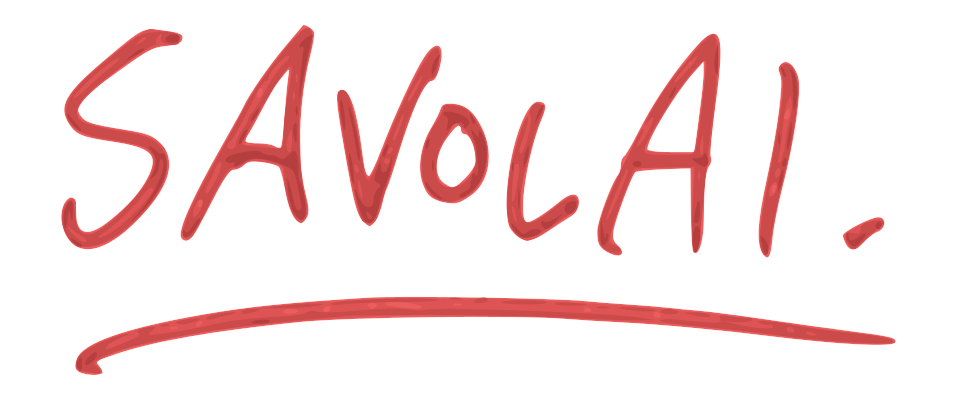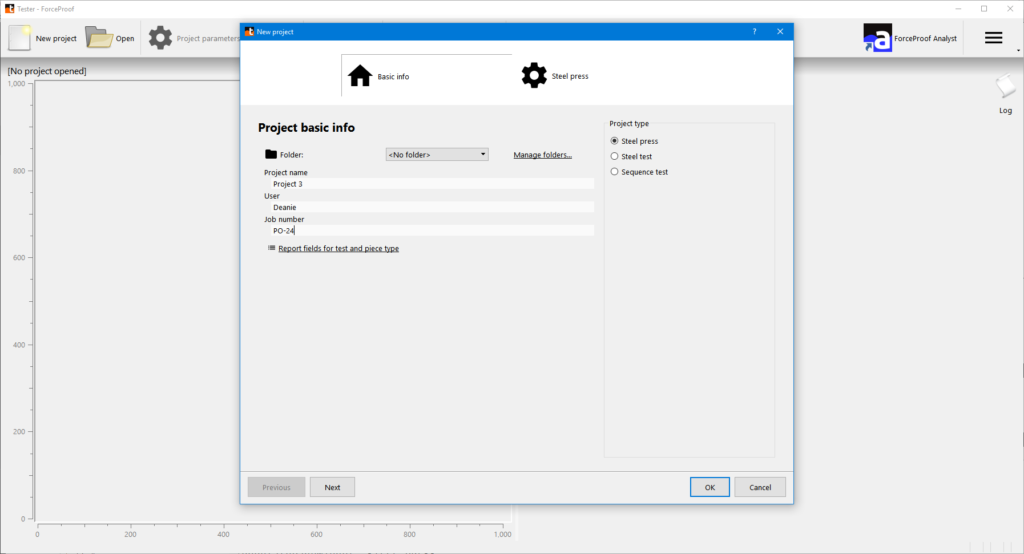
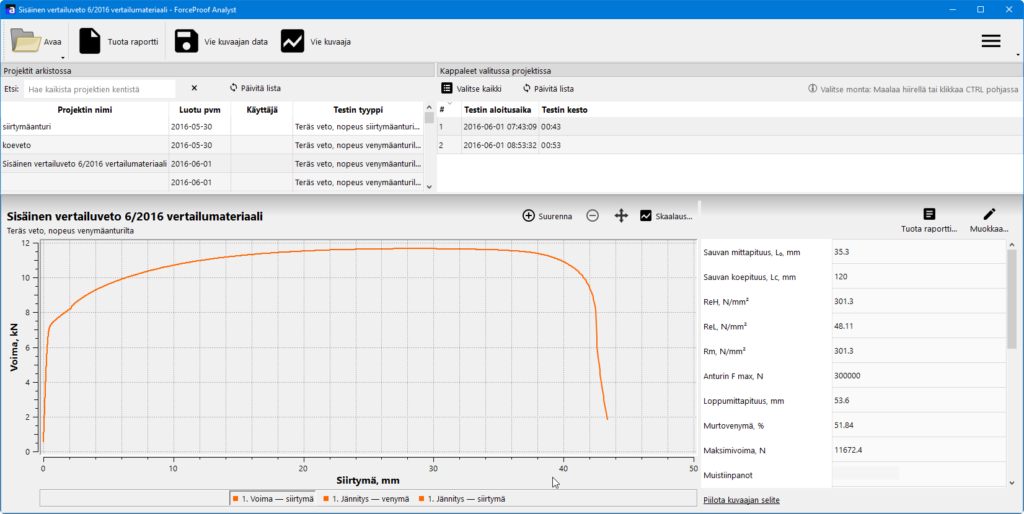
ForceProof is a 21st century, comprehensive software and hardware product solution for materials testing.
Entrepreneur; Product Management, UX Design
”In my opinion, the program reflects a philosophy of user-friendliness and simplicity that others could learn from. The machine allows for versatile testing in a safe manner, with a logical and simple user interface. Other similar testing programs are often unpleasantly complex and confusing, especially for less experienced users. Therefore, I see clear potential for this software to excel in competition, particularly in terms of user-friendliness.”
”I have tested ForceProof in a testing apparatus that allows us to simulate the loading and unloading stresses of a paperboard core inside of a paper roll, in addition to regular load testing. … Our criteria were safety, versatile functionality, and easy usability. We also invested a significant amount of time in testing before implementation.
I have extensive experience in using similar software in product development and testing, as well as in scientific research. In 2004, I completed my doctoral thesis, … In that study, I conducted numerous tests using various types of material testing machines, including a similar tester to the one on which ForceProof was recently installed. The software for the previous hardware was developed by a different party, so I have a good basis for comparison. …
… You also had to create custom add-ons to manage, for example, the operation of the rotation motor used in testing in sync with the rest of the loading equipment. We also had very high safety requirements.
The user-friendliness of ForceProof was highly valued since the machine had to be operable with a reasonably short training period while ensuring safety. All user-related risk factors had to be minimized. Some adjustments were made to the program and system during testing, but the end result is highly successful.
In my opinion, ForceProof reflects a philosophy of user-friendliness and simplicity that others could learn from. The machine allows for versatile testing in a safe manner, with a logical and simple user interface. Other similar testing programs are often unpleasantly complex and confusing, especially for less experienced users. Therefore, I see clear potential for this software to excel in competition, particularly in terms of user-friendliness.
… I believe this program should be maintained, further developed, and actively marketed as a versatile, customizable, and user-friendly option for the needs of both science and industry.”
Marko Ilomäki
Sonoco-Alcore Oy
Senior Research Scientist, D.Sc. (Tech.)
Kotka, Finland
Key takeaways:
- We have been on this product development journey since 2010, and ongoing.
- We’ve engaged customers in industry and in educational institutions in Finland, Sweden, the Baltics, and in Germany
- This versatile software framework has been continuously iterated to build about fifty devices during the project’s lifetime.
- In 2022-2023 we have effectively built a minimum viable mini-DSL and GUI for generating it, for building versatile measurement applications efficiently. The UI building framework of ForceProof was built with Qt.
What I feel proud about with this product journey is the long term commitment we’ve had with staying connected with our user base. This has enabled us to actually make long term decisions in relation to what matters to our users.
“to make the easy things easy, and the hard things possible” -Larry wall
Despite growing the featureset throughout the lifetime of the product, we never became a feature factory. What I mean by that is that I feel we stayed quite disciplined in prioritizing the overall UX. I.e. I think we managed to prioritize actual needs of users such that the experience has stayed balanced.
Customer Centered Design Challenges
- Online marketing, f2f sales, support services,
- stakeholder mediation, wireframing, usability testing
- conceptual and data modeling
The product we replaced in the market actually had more flexibility than ForceProof. It turns out that in many cases, the overwhelming flexibility of existing competitors was in fact slowing our users down, and the complexity made the learning barrier exceedingly high. For example, the predominant competitor in Finland had a hierarchy of Project -> Item -> Test result. Items were hidden inside projects, and to find a specific item, they had to remember which project it was in.
It turns out that…
- having a flat hierarchy of Project ⮕ Test result and
- allowing users to define additional free text data fields
… allowed for sufficient structure and at the same time made it easier to find your data afterwards.
The most fascinating part of this project has been figuring out the degree of variation required, and balancing the needs of different clients here.
During first four (or so) years, lots of mistakes were made and features scrapped that seemed important at first. The big picture of what’s relevant to most customers has built up slowly.
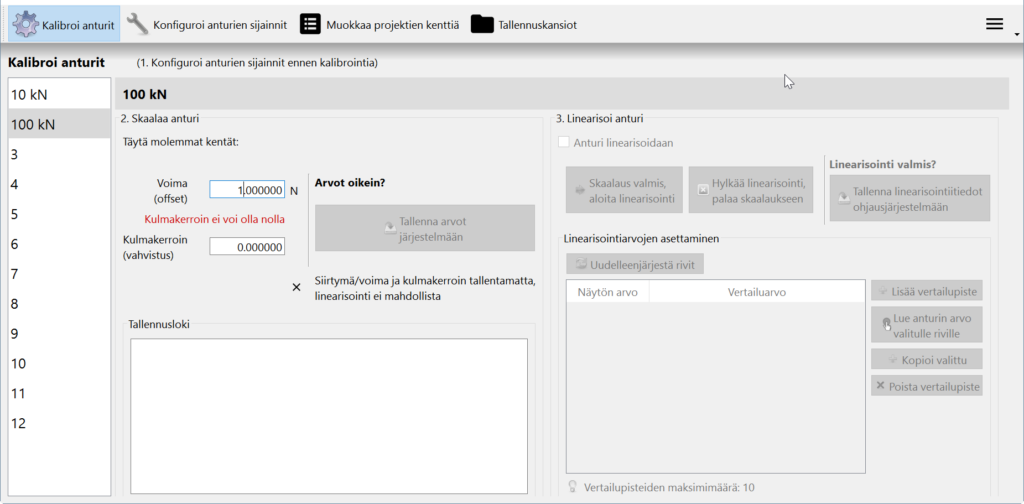
Expanding architecture: Meet needs of a wider variety of stakeholders and organizations
The first version of the software was for testing steel. As we learned about more materials and more standards for testing, we slowly added different parameters and started supporting
- different materials,
- more kinds of testing processes, and
- more needs for data management.
In 2014, we got a deal for modernizing a machine that was a lot more complex than previous ones. A dozen tests, and various units in which the measurement data and the results were to be analyzed.
It was clear our existing UI architecture couldn’t handle this, so we had to step up the abstraction level.
Both the PLC and the desktop application had to be largely rethought. That client project was complex, but the client was very patient with us, and eventually we finished the project.
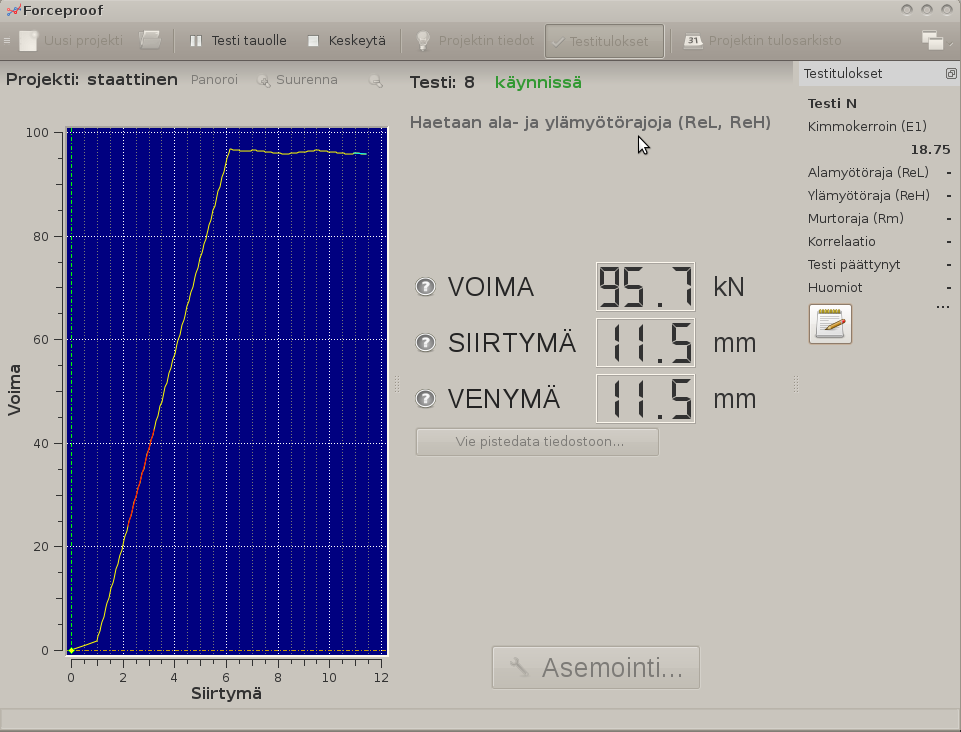
For that project, I ended up designing a single source of truth across the software to adjust customer specific behaviour of the app.
The benefits have been very tangible, of handling the variation between clients. We can handle lots of customers, faster, and so we are scaling up fast.
Overview
In all this, I have done a lot of usability testing both explicitly and implicitly in customer support situations to maintain a base level of UX at all times.
UX Stakeholders include
- Automation programming professionals
- Testing managers
- Materials Engineering professionals
- Materials testers on factory production lines
- IT administration
To understand the scope of the effort better, see also: ForceProof suite documentation (in Finnish)
